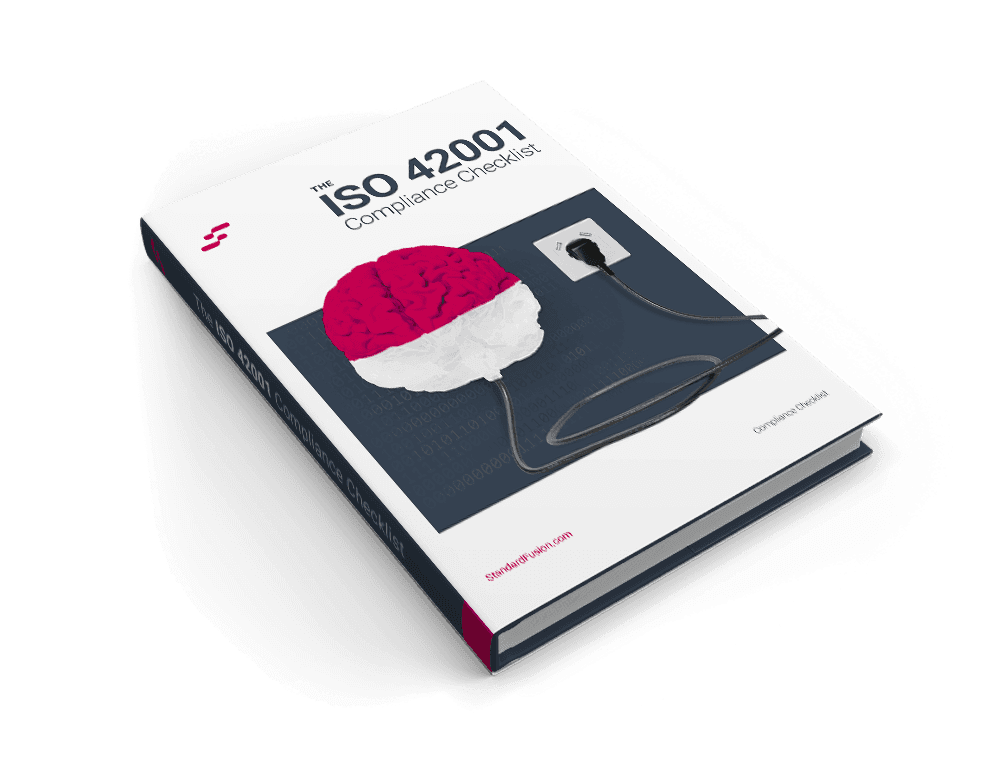Published on: Apr 20, 2021
ISO 27001 - Implementation & Leadership Support
The industry standard for information security management, ISO 27001 provides a structured framework for data security, privacy compliance, risk management, and operational assurance.
In our 8-part Guide to ISO 27001, we will provide you with essential guidance to protect your assets, how to create an ISO 27001 compliant information security management system (ISMS), leveraging your system to achieve strategic objectives, and everything in between.
Beginning our Guide to ISO 27001 with Part 1 - "Implementation and Leadership Support", we explore the advantages of establishing an ISMS, why leadership buy-in is vital to the success of the program, and how to garner the support of management.
You can also check the ISO 27001: 2022 changes here.
Information Security Management Systems
Cloud computing has taken the world by storm. Disrupting enterprise and consumer markets around the globe, it continues to shape how companies operate and how services are delivered. The transition to the cloud has allowed companies to express their creativity and refine their strategies, but also introduces a host of new cyber and information security risks that need to be assessed and managed by user organizations.
To mitigate these risks, many companies have chosen to implement an information security management system. Such systems contain processes, documents, technology, and people that manage, monitor and improve your organization's information security.
Implementing a robust management system is a massive undertaking and simply getting started can seem daunting. Fortunately, there are many recognized industry standards to help guide the development of your own ISMS.
Advantages of Establishing an ISMS
The ultimate outcome of ISO 27001 is creating a comprehensive ISMS that promotes the principles of the data security triad - also known as the "CIA triad":
Confidentiality: information must remain confidential, and only the authorized persons have the right to access it.
Integrity: Data must be protected against unauthorized changes and deletion.
Availability: Data must be available and accessible only to authorized people.
There are qualitative and quantitative reasons why you should consider establishing an ISMS:
Demonstrate accountability and improve competitive advantage. Being ISO certified increases the reliability and security of your systems. By documenting processes and policies, your organization will create assurance and show consistency to internal and external stakeholders. An ISO certification may have an advantage over competitors, especially if you are dealing with clients with high security requirements in the procurement process.
Compliance with data privacy regulations. The legal requirements over data privacy are becoming stricter, and it includes administrative and technical safeguards applicable to information assets. ISO 27001 offers an extensive framework that can support your legal and contractual compliance efforts.
Increased business resilience. The core of ISO 27001 is to provide a structured framework for corporations to prevent security incidents and mitigate risks. Business resilience represents organizations' ability to rapidly adapt and respond to threats and consequently lower the high recovering costs.
Clause 5: Leadership
Clause 5.1 in ISO 27001 - Information Security Management states that:
Top Management must demonstrate leadership and commitment by ensuring the information security policy and the information security objectives are established and compatible with the organization's strategic direction. The top Management must ensure integrating the information security management system requirements into the organization's processes. The top Management must make available the resources needed for the information security management system.
The purpose of these requirements is to demonstrate leadership and commitment by leading from the top. But how can you acquire leadership buy-in and guarantee the necessary support for your ISMS objectives?
It is vital that your project implementation aligns with your organization's wider strategic objectives. Leadership engagement will be important to define the:
Mission statement of your project: ISMS Policy
Necessary human and financial resources
Focus and prioritization as part of the staff daily activities
External communication with clients and the industry
ISMS leadership must inspire internal and external stakeholders and how the certification can be used as a business enabler, adding value to the service and generating positive ROI.
Having a Clear Vision & Establishing Priorities
Implementing an ISO 27001 compliant ISMS can be extremely valuable in the long run, instilling a strong risk-focused culture while adding to your competitive advantage. The success of your system depends on the support of leadership and their engagement in data protection. In part 2 of our Guide to Iso 27001, we will explore the system Scope, how it contributes to your system, and the role of the Statement of Applicability,
How Can StandardFusion Help?
With StandardFusion GRC software, you can create an ISO 27001 program based on the standard's exact requirements, allowing you to pinpoint where you are compliant or not for unmatched visibility. You can also manage policies and procedures throughout their entire life cycle all in a single tool.
Develop your policies from the ground up, update them as needed with our in-app document editor, and maintain different policy versions for auditing purposes all within the tool. See how you can manage the implementation of your ISMS with StandardFusion and schedule your demo today!
Guide to ISO 27001
Part 1: Implementation & Leadership Support
Part 2: Establishing Scope and Creating the Statement of Applicability
Part 3: Mandatory Clauses
Part 4: Understanding & Communicating with Stakeholders
Part 5: Risk Management
Part 6: Defining Controls
Part 7: Competence, Training and Awareness
Part 8: Monitoring Efficacy & Continuous Improvement







